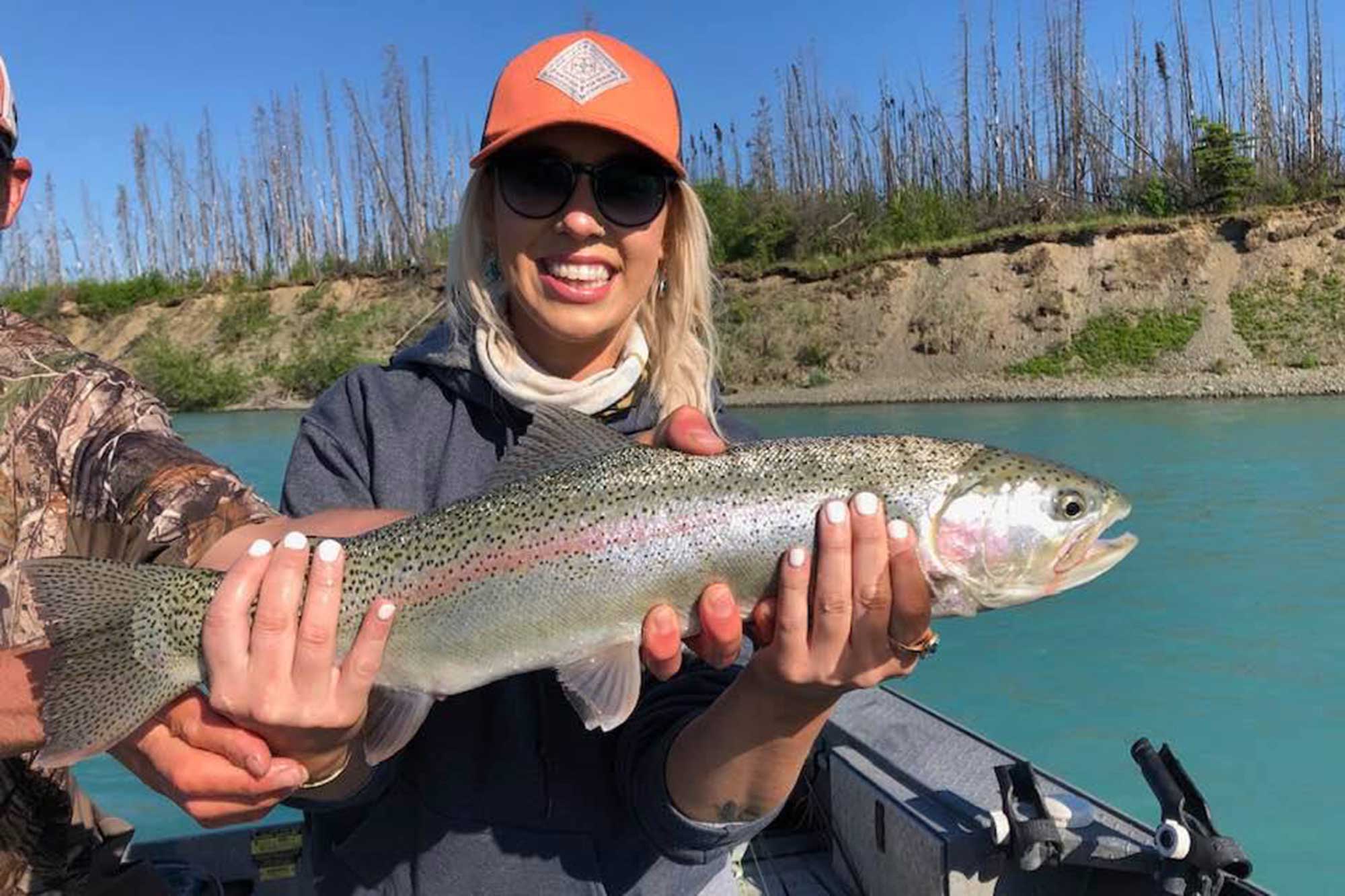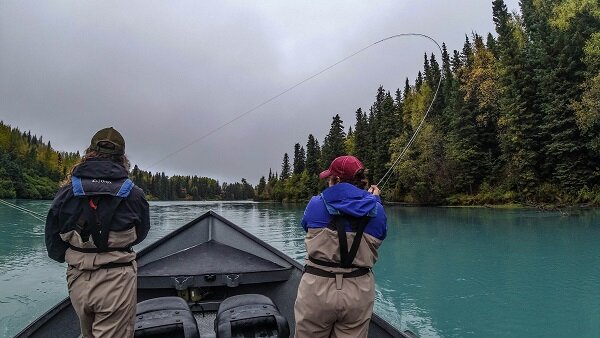How To Make World Class Alaska Fishing
Freshwater, marine, fly-fishing, and even ice fishing are popular in Alaska. It may be as straightforward as pulling over to the side of the road and casting a line, or you could rent a boat or floatplane to transport you to a secluded fishing location where you can catch one of Alaska’s 627 species of salmon, trout, halibut, arctic char, pike, grayling, and Dolly Varden. The problem is deciding where and what to catch with over three million lakes, 12,000 rivers, and hundreds of fish-filled streams.
Alaska is brimming with World Class Alaska Fishing attractions. Salmon and halibut fishing is a well-known hotspot. More fish are caught per license in Southeast Alaska than everywhere else, and the catch restrictions are liberal. You are instantly entered into our Calm Water Derby when you make your reservation.
King Salmon Fish
There’s a reason Alaska is known for its salmon: every summer, millions of them swim up Alaska’s rivers, erupting out of the water. Whether you’re looking for one of Alaska’s five salmon species (kings are the largest, reds the wealthiest, and silvers the finest fighters) or just want some tasty wild salmon to take home, you’ll find it here, whether you’re fishing alone or on a half-day or full-day charter. These visits may include your tackle and equipment, as well as assistance cleaning, packing, and sending your catches home.
Types of Salmon Fishes
From May until August, The precise peak dates vary depending on where you are, but the general lineup for the season is as follows: king, silver, sockeye, pink, and chum.
Coho Salmon
Go coho fishing if you want an intense bite and battle. These salmon are renowned for striking topwater flies and are enjoyable to catch. Because of their dazzling silver appearance, coho salmon are also known as silvers. The best months for coho fishing in Alaska are August and September, also the best months for rainbow trout fishing.
Chinook Salmon
The chinook salmon is Alaska’s state fish. This massive fish, often known as the king salmon, weighs 20 to 30 pounds on average! From mid-June to mid-July, the optimum time to go king fishing is.
Sockeye Salmon
Alaskan sockeye attracts anglers from all over the world. Because of their popularity, they are the most commercially significant fish in Alaska. During June and July, sockeye salmon spawn in Alaska. Salmon turn a vivid red hue as they go to their breeding grounds. Because of their color, many Alaskans refer to sockeye salmon as “reds” (not to be confused with redds).
Chum Salmon
Chums are distinguished by their bluish-grey tiger stripes and a considerable kype (spawning males). Because of their large canine-like teeth, they’re also known as dog salmon. According to some, they’re also known as dog salmon since sled dogs used to be fed this less delicious fish. Chum salmon are the most widely dispersed Pacific salmon, despite their lack of flavor. These tiger-striped fish may grow to be 10-13 pounds and put up a fierce fight on the fly.
Pink Salmon
Although pink salmon is the smallest Alaskan salmon species, they are nonetheless enjoyable to capture. Due to the enormous humps that spawning males develop as they approach spawning, these salmon are also known as humpies. Because humpies are so bony, many Alaskans refuse to eat them. However, catching pink salmon on the fly is a blast, and August is the optimum month to do it.

Alaskan Salmon Fishing with King Salmon Lodge
Nightly accommodations, conferences, private group retreats, multiple day packages, special events, meetings, gourmet restaurants, cocktail lounges, world-class fishing, bear watching, and outdoor adventure day-trips are available at King Salmon Lodge, also known as “KSL.” King salmon alaska lodging is conveniently positioned on the bank of the Naknek River, about 1.5 miles from the King Salmon airstrip, with easy access to adjacent Katmai National Park. Matt Norman, the lodge manager, has thirty years of experience in King Salmon’s sportfishing, lodging, restaurant, and bar sector. You can also find the best alaska salmon fishing guides there.
Leopard Rainbow Trout Fish
Leopard rainbow trout are captured throughout the United States, although they are native to portions of Alaska. Rainbows migrate to the ocean once they are born, leaving fresh water behind. After maturing in the salt, they migrate back to their natal river. Steelhead is the common name for this species of Rainbow Trout. Leopard Rainbows may be found in numerous rivers around Alaska, but we believe they were perfected in the Kanektok River’s water. These monsters appear to be far from the Rainbows of the lower 48, who gently suck midge emergers. Rainbows are carnivores to the core.
Leopard Rainbow Trout Fishing With Alaska Rainbow Lodge
Rainbow lodge restaurant, located in the middle of Bristol Bay, is where to go for salmon fishing. It’s secluded, wild, and Alaskan. The most excellent Alaska fishing lodges will provide a combination of fly-out fishing to surrounding streams and trophy fishing on their “Home” river to the fisherman. The Kvichack River, home to Alaska’s largest Rainbow Trout, is where Alaska Rainbow Lodge is located. It’s a 15-25 minute flight from ARL to Bristol Bay’s greatest and most famed Trophy Rainbow Trout wade fly fishing streams.
The Alaska Rainbow Lodge offers superb angling chances to its guests. You’ll get access to all 30 streams in the well-known Bristol Bay region of Western Alaska.
Wading, drifting, casting, or plugging will catch fish at Alaska Rainbow Lodge. Some streams are classified as fly-fishing only regions and rivers that allow fly-fishing and conventional gear use. It is entirely up to you what form of fishing you engage in. Alaska Rainbow Lodge only flies fish for Rainbow Trout, Arctic Char, and Grayling caught and released. The most stunning fly fishing in the world may be found in Bristol Bay, Alaska.
Fly Fishing in Alaska
Alaska flies fishing chances abound in Lake Creek and the dozen or so nearby streams. Fly fishing for salmon in alaska arrives in June, followed by chum salmon and pink salmon in early July. Last but not least, fishers will find lots of Alaska silver salmon (coho) activity in late July and August when multiple kinds of salmon spawn in Lake Creek. Most extraordinary rainbow trout fishing begins in early August.
The Chinook (king), Coho (silver), and Chum salmon are the three salmon species that will strike at your fly presentation. Despite their abundance (Bristol Bay runs number in the millions), Sockeye salmon do not “strike” your fly. The Sockeye use the riverbanks as a navigational aid to locating their ancestral spawning stream. They usually march upstream nose to tail, sometimes five wide. Anglers can use a floating line with a 9′ leader and a weight around 3″ from the fly to capture them with a fly. A throw is made a little upstream, but the fish are following upriver outside of the line.


